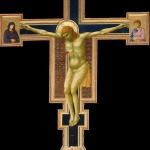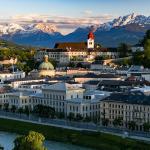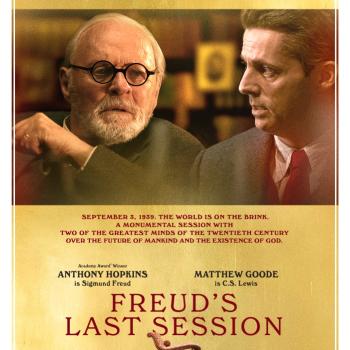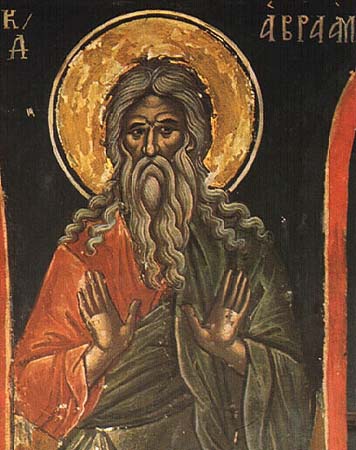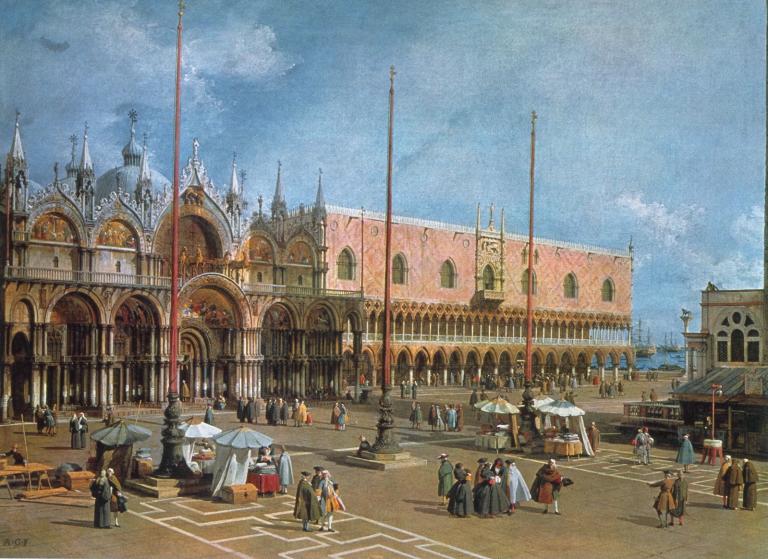
This morning, my wife and I walked over to the Doge’s Palace, the Palazzo Ducale, on the Piazza di San Marco, where she had booked a guided tour. The Palazzo Ducale was the residence of the Doge or Duke of Venice from its construction in 1340 until the Napoleon-induced demise of the Republic of Venice in 1797, and it is a fascinating and splendid building.
Our guide was named Alessia — Alessia Carraro, I believe — and she was both very good (which is to say, very knowledgeable) and very kind. She painted a portrait for us of a Venetian Republic that, while not without flaws and errors, was in many ways admirable. (From my viewpoint, strongly sympathetic to the Byzantines, Venice hasn’t, umm, always seemed worthy of admiration. I was particularly impressed today, though, by the measures that the Venetian founders took to avoid “cults of personality” and to limit the power of the Doges, as well as by the sheer idea of a “republic” so early — it was founded in AD 697 — and so long-lasting. Exactly eleven centuries!) I need to go back and read more about the Republic. I’ve had John Julius Norwich’s book on the history of Venice for many years but, sadly, haven’t read it.
And I owe it to Lord Norwich to read his book. When my youngest son was still quite young and was working on a school project about the fall of Constantinople — the topic was my idea, but my son really took to it, probably because of the sheer tragic drama of the story — he had a particular question and I encouraged him to send it to John Julius Norwich, whose work on the Byzantines I had admired. Somewhat to my surprise, Lord Norwich — a prominent author and a British aristocrat — took the time and effort to send my son a very helpful personal answer. Norwich passed away in 2018, but I’ve always appreciated his kindness toward a young boy.
After the Doge’s Palace, Alessia took us into the marvelous Basilica of St. Mark, which is directly adjacent to the Palace and, in fact, was basically the Doge’s church. It only became the cathedral of Venice in 1807. It feels strongly Byzantine to me, which I love. This was the first time that we’ve had a guide in the Basilica, and it was entirely worthwhile; she pointed out a number of features of the building that we had not noticed before.
I might mention that, although he wasn’t mentioned today, Venice and the Basilica produced a pope during my lifetime: Pope Paul VI elevated Albino Luciani to be patriarch of Venice on 15 December 1969 and created him a cardinal on 5 March 1973. Then, after the death of Paul VI, Cardinal Luciani was himself elected to the papacy on 26 August 1978. He took the name John Paul I in honor of his two immediate predecessors, and adopted Humilitas as his papal motto. Sadly, he died on 28 September 1978, at the age of just sixty-five years. For particular personal reasons, I was paying fascinated attention and I remember the death of Paul VI, the election of John Paul I, his death, and the election of John Paul II with especial clarity.
We spent a fair amount of the late afternoon and early evening on a vaporetto, an ordinary “water bus,” simply cruising around La Serenissima, as Venice is sometimes called. What a magical place!
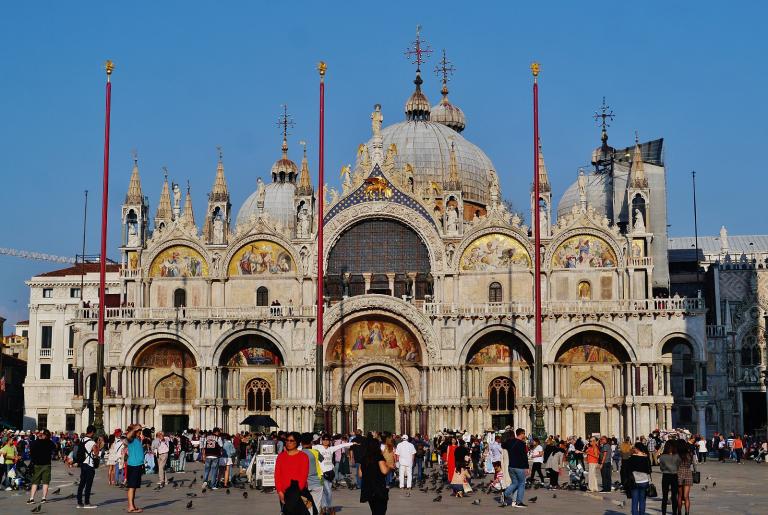
I want to share with you two more passages from Mary Neal’s best-selling book To Heaven and Back: A Doctor’s Extraordinary Account of Her Death, Heaven, Angels, and Life Again (Colorado Springs: Waterbrook Press, 2011).
These two stories come from the time before her own remarkable near-death experience. One occurred when she was an adolescent. The teenage driver of the car in which she was riding lost control while they were going too fast (being high schoolers) over a dangerous and icy hill. They came to a rest turned over and upside down in a ravine:
During our rolling descent into the ravine, I clearly and loudly heard God tell me, “I am with you.” At that moment, my fear dissolved, and I was even able to marvel at the beauty of the revolving trees and shrubs I saw through the shattering glass window as we tumbled down the hill. This was my first recognizable experience of God’s presence in my life. I marveled at what I had heard and felt but, to be honest, I was quite startled by this experience. I began to consider that God might not be just a “childish and silly belief after all. For me, God was real, present, and apparently had more of a plan for my life than I seemed to have. (8-9)
The second happened much later, after Dr. Neal had beome a surgeon but still prior to her own NDE. It involves a young girl named Jennifer, who suffered complete liver failure at the age of fourteen. She received a transplant, but her prognosis was poor and, at that time, treatments were not very effective but nonetheless quite invasive. Jennifer soon grew very tired of the medical interventions:
One day Jennifer told me that she was not afraid of dying, but was afraid of what would happen to her parents. Apparently when her liver had initially failed, she tried to explain to her parents that God was with her and loved her, and that He wanted her to “come home.” Her parents refused to accept this, so she agreed to undergo liver transplantation.
One day as I prepared her for yet another trip to the operating room, she told me that she would not be coming back. She thanked me for everything we had done for her and told me that her angels were with her so I should not be sad. She told me she was sad for her parents, but it was time for them to “let me go.” I listened and accepted the truth of her words. Still, my tears flowed freely later in the days when her heart stopped beating. (26-27)
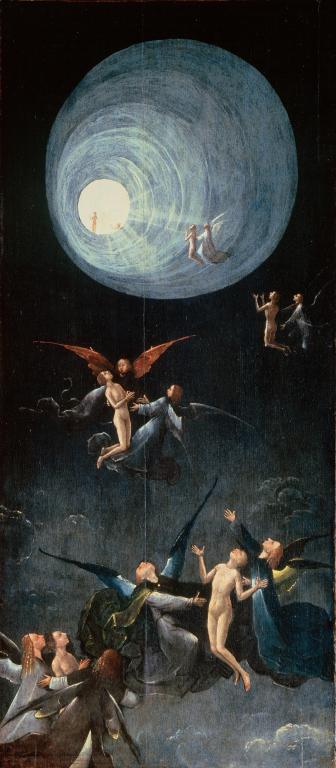
(Wikimedia Commons public domain image)
Speaking of near-death experiences, I was hoping that we would be able to see the astounding Hieronymus Bosch painting Ascent of the Blest again. I misremembered it as being in the Doge’s Palace, but it’s actually in the Gallerie dell’Accademia, which is very near where we’re staying. Alas, though, we simply ran out of time.
Posted from Venice, Italy


